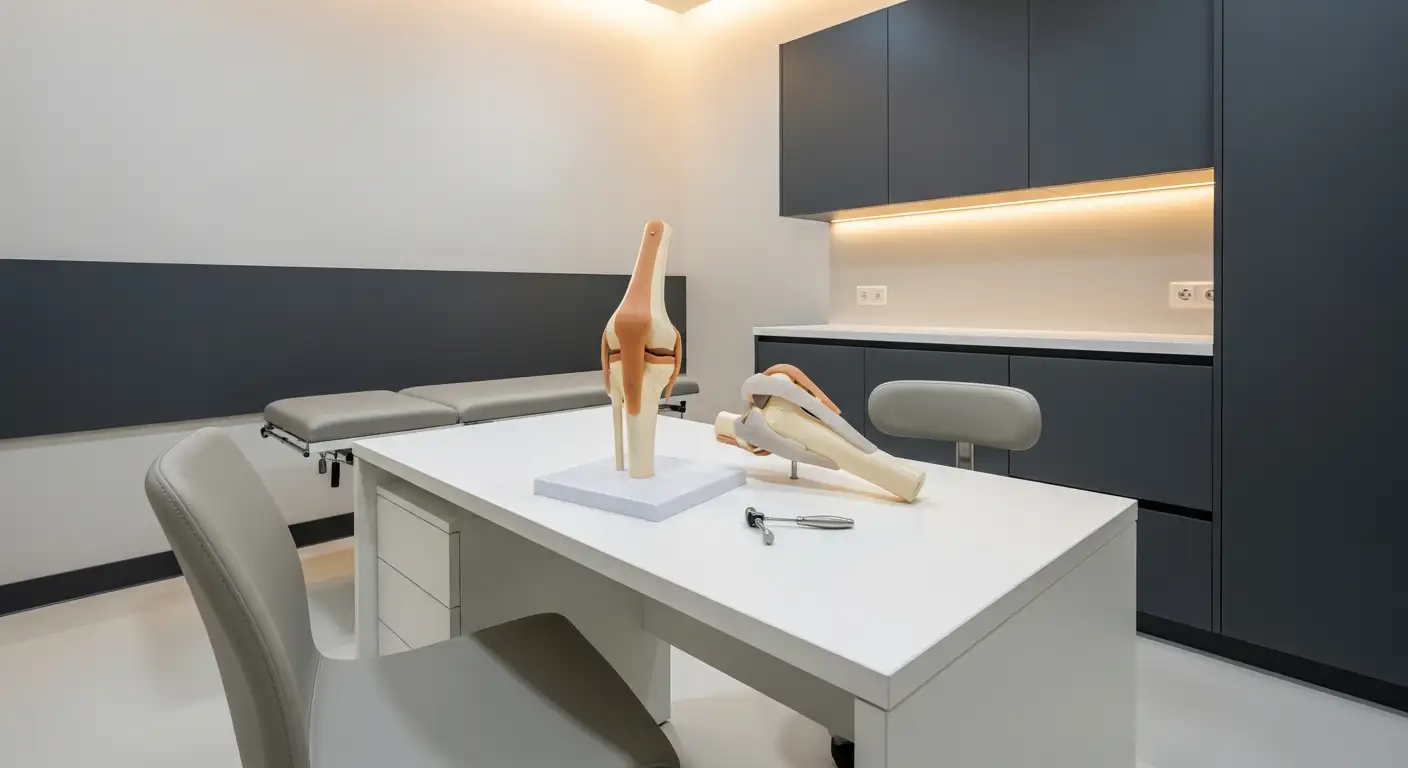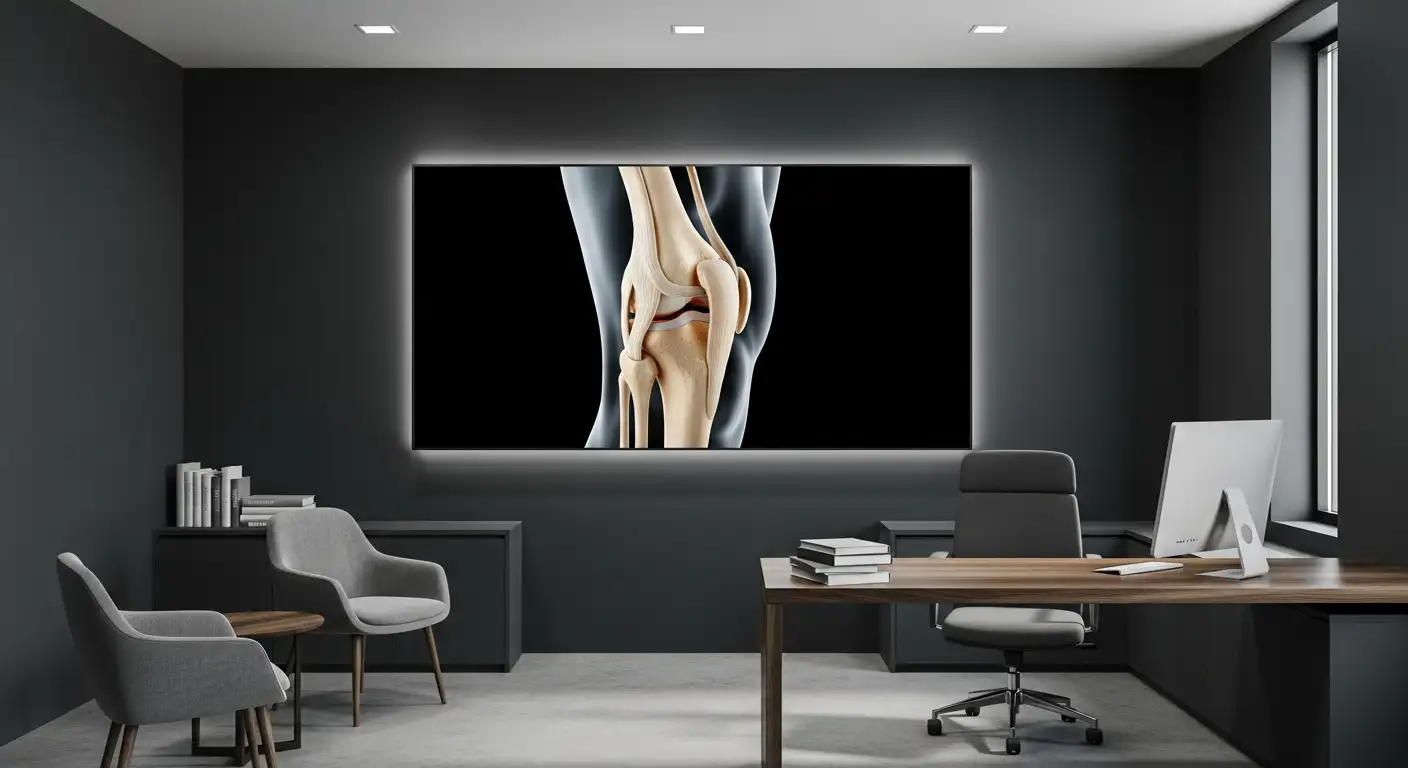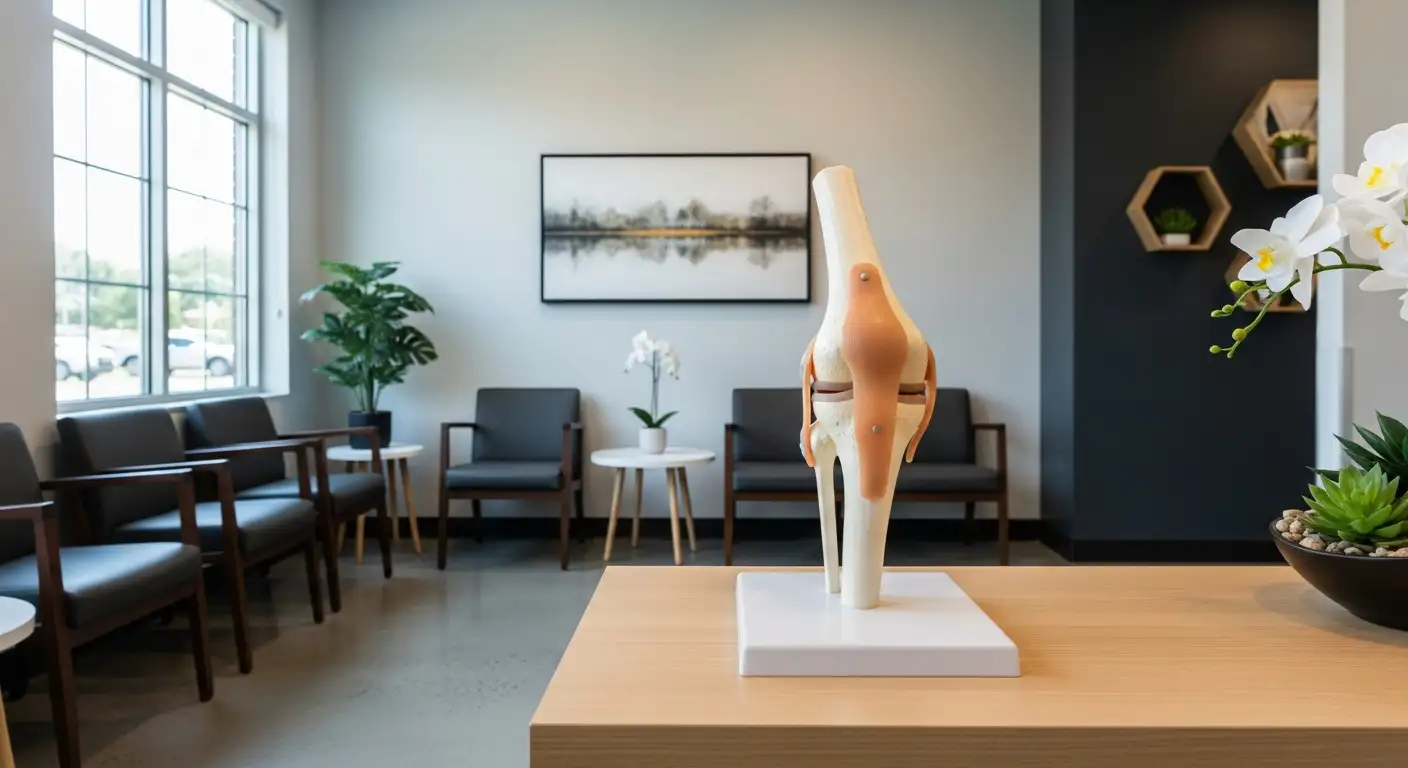Understanding Patellar Tendinitis
Patellar tendinitis, also known as jumper's knee, is a common condition, especially among athletes and physically active individuals. This section will delve into the definition, causes, symptoms, and progression of this knee condition.
Definition and Causes
Patellar tendinitis, colloquially known as jumper's knee, is a common overuse injury that primarily affects athletes whose sports involve frequent jumping, such as basketball and volleyball. However, individuals who do not participate in jumping sports can also develop this condition [1].
This condition is caused by repeated stress on the patellar tendon, which connects the kneecap to the shinbone. This constant stress results in tiny tears in the tendon, which the body attempts to repair. However, when the tears in the tendon increase faster than the body's ability to repair them, inflammation and pain can occur, leading to patellar tendinitis.

Other factors that may contribute to the development of patellar tendinitis include overuse of the knee during activities that involve running and jumping, tight or weak thigh muscles, and muscle imbalance. Prolonged overuse and sudden changes in activity level are also primary causes of patellar tendonitis.
Symptoms and Progression
The symptoms of patellar tendinitis usually begin as pain in the knee during physical activity or just after an intense workout. As the condition progresses, the pain worsens and may start to interfere with playing sports or participating in physical activities. Over time, the pain may become so severe that it interferes with daily activities such as climbing stairs or rising from a chair [1].
The progression of patellar tendinitis can be gradual and the pain may come and go over time. However, without proper treatment, the condition can become chronic and may limit an individual's ability to participate in sports or even perform daily activities. Therefore, it is crucial to seek medical attention and start treatment as soon as symptoms of patellar tendinitis are noticed.
Diagnosis and Risk Factors
Understanding the condition of patellar tendinitis, commonly known as jumper's knee, is the first step towards managing it. This understanding involves knowing how the condition is diagnosed and the risk factors that contribute to its development.
Diagnostic Process
When a person presents with symptoms that are indicative of jumper's knee, a medical professional will likely conduct a thorough physical examination of the knee. This could involve examining the area for tenderness, swelling and pain. Additional tests, such as X-rays or MRI scans, may be needed to confirm the diagnosis and rule out other conditions.
The diagnosis of patellar tendinitis is usually based on the patient's symptoms and a physical examination. The medical professional will typically ask about the patient's physical activities, especially those involving repetitive jumping or running. They will also assess the knee's range of motion and strength. A definitive diagnosis of jumper's knee is usually made when the patient experiences pain specifically at the point where the patellar tendon attaches to the kneecap.
Factors Contributing to the Condition
Patellar tendinitis, or jumper's knee, is most commonly an overuse injury, caused by repeated stress on the patellar tendon which results in tiny tears in the tendon [1]. However, several other factors may contribute to the development of this condition.
Risk Factors for Jumper's Knee:
- Participation in Sports: It's most common in athletes whose sports involve frequent jumping such as basketball and volleyball. However, even individuals who don't participate in jumping sports can get patellar tendinitis.
- Training Duration and Intensity: Training and playing for more than 12 hours per week can increase the risk of developing jumper's knee.
- Training Surface: Playing or training on a hard surface can contribute to the condition [3].
- Tight or Weak Muscles: Tight muscles in the hamstrings, hips, or calves can increase the risk of patellar tendonitis [2].
- Muscle Imbalance: Imbalances in strength and flexibility of the quadriceps and hamstrings can also contribute to the condition [1].
It's important to note that the presence of one or more of these factors does not guarantee that an individual will develop jumper's knee, but they do increase the risk. Therefore, individuals who fall into these categories should be extra cautious and take preventive measures to protect their knees.
Treatment Strategies
Treating jumper's knee involves a combination of professional healthcare and personal care at home. The primary strategies include physical therapy and home treatments.
Physical Therapy
Physical therapy is usually the first line of treatment for patellar tendinitis. It aims to stretch and strengthen the muscles around the knee, which can help alleviate pain and improve function.
Suggested exercises and stretches for this condition include:
- Hamstring stretches
- Calf stretches
- Kneeling hip flexor stretches
- Straight leg raises
- Squats/wall slides
- Step-ups
These exercises aim to improve strength and flexibility in the knee and surrounding muscles, which can help prevent further injury.
Rest and Home Treatments
In addition to physical therapy, rest and home treatments are vital for recovery. The primary treatment involves ceasing any activities causing the issue until the injury is healed. Additional treatments may include rest, ice, and the use of a knee brace or patellar tendon strap.
Other recommended home treatments include:
- Icing: Applying ice to the affected area can help reduce pain and inflammation.
- Knee brace: Wearing a knee brace can provide additional support and stability to the knee, helping to alleviate pain.
- Anti-inflammatory medications: Over-the-counter anti-inflammatory medications can help reduce pain and swelling.
Rehabilitation, prescribed exercises, strength training, and time off the activity are essential components of the treatment plan.
Remember, the healing period can vary from a few weeks to several months depending on the severity and individual health factors. Always consult with a healthcare professional before starting any new treatment or exercise regimen.
Prevention and Recovery
Dealing with jumper's knee, or patellar tendinitis, requires understanding not only the treatment options available but also the preventive measures and considerations for recovery.
Preventive Measures
Preventing jumper's knee is dependent on several factors, most prominently the individual's physical fitness level and activity habits. Some preventive measures include:
- Regular Exercise: Regular strength and flexibility exercises can help maintain muscle balance and limit the strain on the patellar tendon.
- Proper Technique: Whether it's jumping, running, or lifting, using the correct technique can help prevent overloading the knee.
- Gradual Increase in Activity: If you're starting a new exercise regimen or sport, gradually increasing the intensity and duration of activity can help prevent overuse injuries like jumper's knee.
- Appropriate Footwear: Shoes that offer proper support and cushioning can help absorb shock and reduce stress on the knee.
Recovery Timeline and Considerations
Recovery from patellar tendinitis varies from person to person. While the healing process takes time, consistency, patience, and modifications to activities are crucial for effective recovery. The healing period can range from a few weeks to several months depending on the severity and individual health factors.
Most cases of jumper's knee will resolve with nonoperative management. Nevertheless, mild to moderate pain may persist for 15 years in adult athletes with patellar tendinopathy but does not appear to limit leisure-time physical activity [7].
It's important to remember that patellar tendonitis treatment should be individualized based on the phase of the injury, whether acute or chronic. Recovery timelines can vary significantly, taking a week for one individual and a month for another.
In conclusion, prevention and recovery from jumper's knee involve a combination of regular exercise, use of correct techniques, gradual increase in activity levels, appropriate footwear, and individualized treatment plans. It's important to consult with a healthcare professional or physiotherapist to establish a personalized treatment and recovery plan.
Exercise Recommendations
To manage and prevent the recurrence of jumper's knee, incorporating certain exercises into your routine and avoiding stressful movements can be highly beneficial.
Stretches and Strengthening Exercises
For most people, treatment of jumper's knee begins with physical therapy that includes exercises designed to stretch and strengthen the muscles around the knee. This can help restore function and reduce the chance of further injury [1].
The Cleveland Clinic suggests the following stretches and exercises:
- Hamstring Stretches: Stretching the hamstring muscles can help reduce knee pain.
- Calf Stretches: Stretching the calf muscles can also alleviate discomfort.
- Kneeling Hip Flexor Stretches: This stretch can help relieve tension in the hips, which can reduce stress on the knees.
- Straight Leg Raises: This exercise strengthens the quadriceps, which can help support the knee.
- Squats/Wall Slides: Squats can help strengthen the muscles that support the knee.
- Step-Ups: This exercise can also help strengthen the knee-supporting muscles.
Remember, it's essential to perform these exercises correctly to avoid further injury. If possible, work with a physical therapist or fitness professional to ensure correct form and execution.
Avoidance of Stressful Movements
While it's important to engage in exercises that strengthen the knee, it's equally crucial to avoid movements that can stress the knee and aggravate the injury. Deep squats, lunges, running, and high-impact activities involving lots of jumping and abrupt movements should be avoided. These activities can include sports like soccer, basketball, and volleyball.
To prevent jumper's knee from recurring or affecting the other knee, gradually ease back into athletic and strenuous activities. Take breaks from activities causing pain, maintain a moderate weight, and use supportive shoes with good shock absorption.
By adopting these exercise recommendations and prevention strategies, individuals dealing with jumper's knee can work towards recovery and future prevention of this condition.
References
[1]: https://www.mayoclinic.org/diseases-conditions/patellar-tendinitis/symptoms-causes/syc-20376113
[2]: https://health.clevelandclinic.org/patellar-tendonitis-exercises-stretches
[3]: https://www.ncbi.nlm.nih.gov/pmc/articles/PMC2715413/
[4]: https://www.hopkinsmedicine.org/health/conditions-and-diseases/patellar-tendonitis-jumpers-knee
[5]: https://www.memorialhermann.org/services/treatments/jumpers-knee-treatment
[6]: https://kidshealth.org/en/teens/jumpers-knee.html
[7]: https://www.ncbi.nlm.nih.gov/books/NBK532969/
[8]: https://www.healthline.com/health/jumpers-knee-exercises





